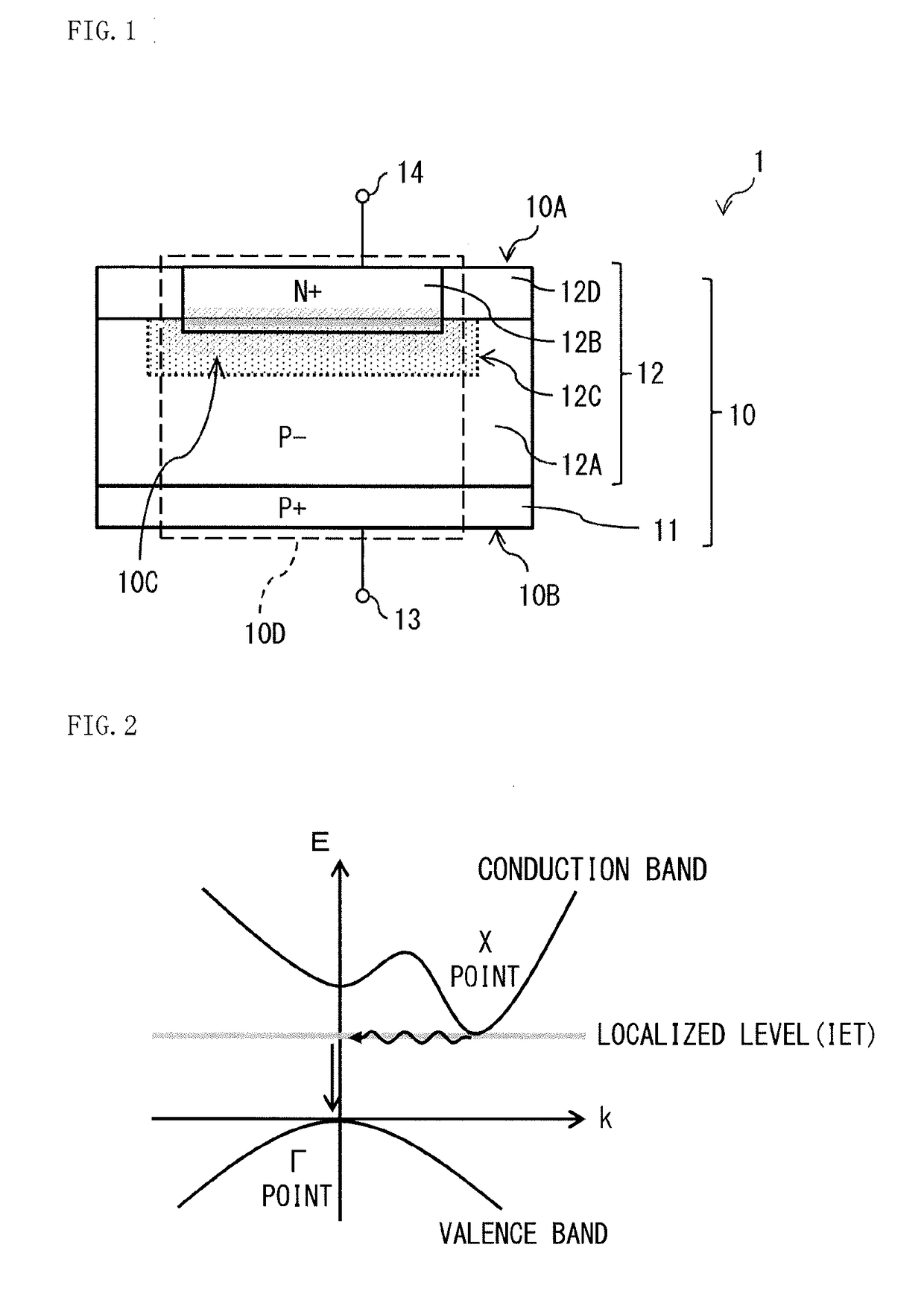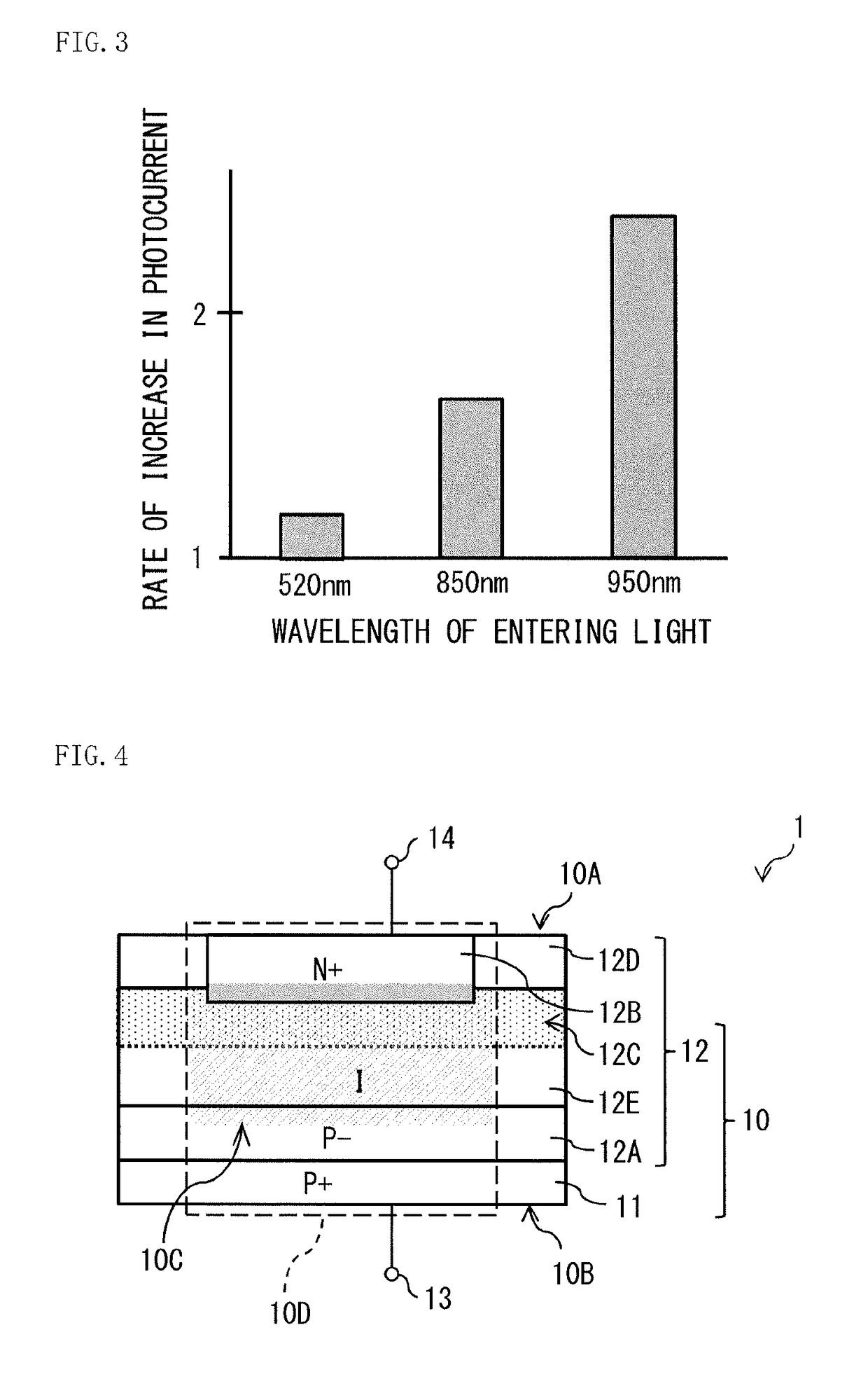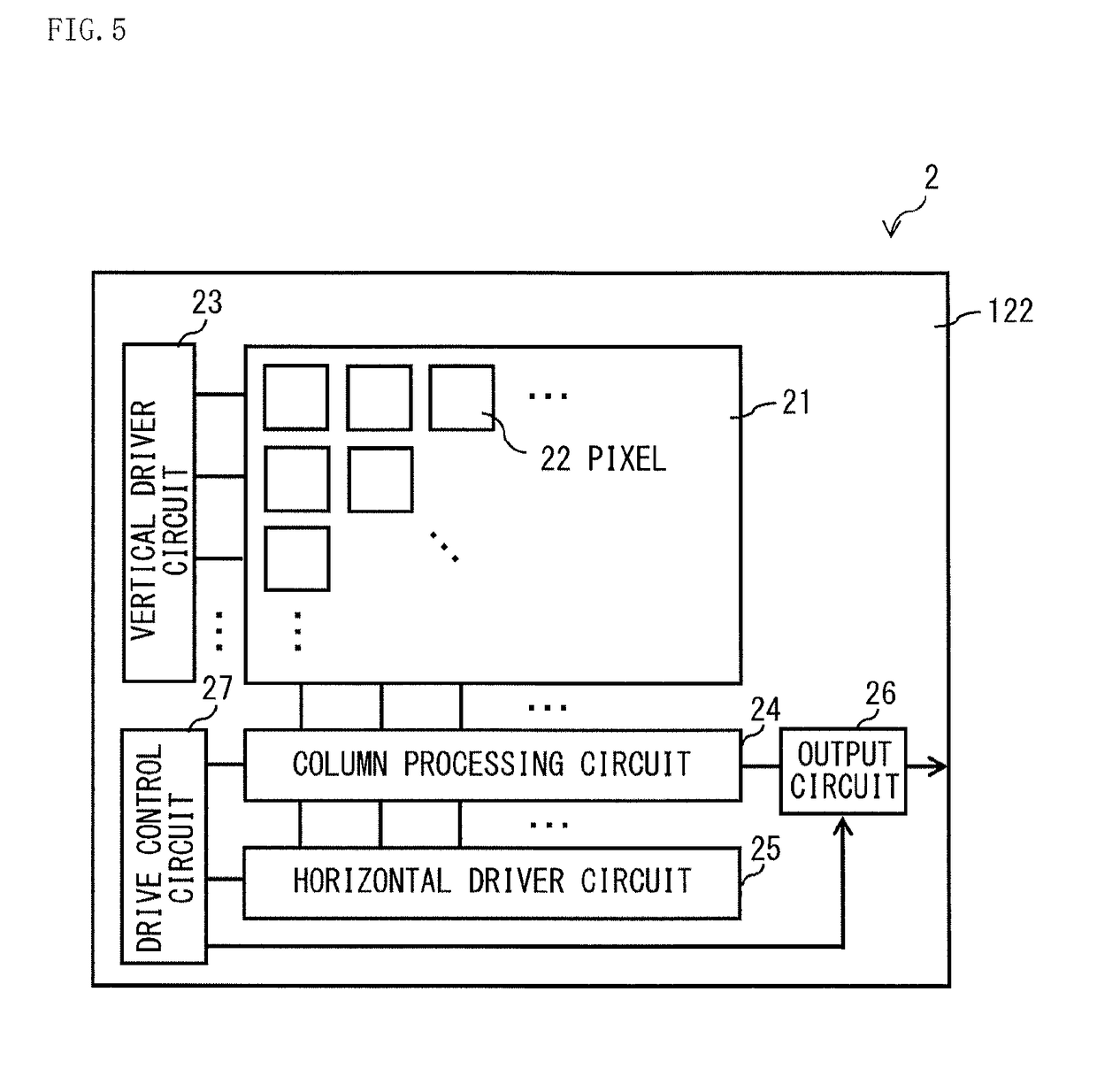Photoelectric conversion element and photoelectric conversion device
- Summary
- Abstract
- Description
- Claims
- Application Information
AI Technical Summary
Benefits of technology
Problems solved by technology
Method used
Image
Examples
first embodiment
1. First Embodiment
[Configuration]
[0039]FIG. 1 illustrates an example of a cross-sectional configuration of a photoelectric conversion element I according to a first embodiment of the disclosure. The photoelectric conversion element 1 includes a photoelectric conversion region 10D inside a semiconductor layer 10. The photoelectric conversion region 10D includes a region in which a depletion region 10C is to be formed by voltage application to the semiconductor layer 10. The depletion region 10C is a region nearly devoid of electrons or holes as carriers. The depletion region 10C converts light into a photoelectron, in which the light enters from side on which a light receiving surface 10A (first main surface) is disposed. The photoelectric conversion region 10D generates the depletion region 10C by voltage application to the photoelectric conversion region 10D. Upon the light entering the depletion region 10C generated, the photoelectric conversion region 10D converts the photoelect...
second embodiment
[Configuration]
[0056]FIG. 5 illustrates an example of a schematic configuration of an imaging device 2 (photoelectric conversion device) according to a second embodiment of the disclosure. The imaging device 2 includes a plurality of photodiodes PD (photoelectric conversion elements) and a driver section that drives the one or more photodiodes PD (photoelectric conversion elements). The plurality of the photodiodes PD share a semiconductor layer 122 with one another, and are two-dimensionally disposed in a light receiving surface 122a (first main surface) of the semiconductor layer 122 shared by the plurality of the photodiodes PD.
[0057]The imaging device 2 includes a solid-state imaging element of a CMOS type. The imaging device 2 includes a pixel region 21 and a peripheral circuit. In the pixel region 21, a plurality of pixels 22 are disposed in rows and columns. The imaging device 2 includes, as the peripheral circuit, for example, a vertical driver circuit 23, a column processin...
third embodiment
3. Third Embodiment
[Configuration]
[0080]FIG. 15 illustrates an example of a cross-sectional configuration of a photoelectric conversion element 3 according to a third embodiment of the disclosure. The photoelectric conversion element 3 includes a photoelectric conversion region 30D inside a semiconductor layer 30. The photoelectric conversion region 30D includes a region in which a depletion region 30C is to be formed by voltage application from outside. In the depletion region 30C, strictly speaking, there are holes that perform electric field modulation, but its concentration is sufficiently smaller than, for example, that in a P+ region 32B described later. Moreover, the depletion region 30C is a region nearly devoid of electrons. The depletion region 30C converts light into a photoelectron, in which the light enters from side on which a light receiving surface 30A (first main surface) is disposed. The photoelectric conversion region 30D generates the depletion region 30C by volt...
PUM
 Login to View More
Login to View More Abstract
Description
Claims
Application Information
 Login to View More
Login to View More - R&D
- Intellectual Property
- Life Sciences
- Materials
- Tech Scout
- Unparalleled Data Quality
- Higher Quality Content
- 60% Fewer Hallucinations
Browse by: Latest US Patents, China's latest patents, Technical Efficacy Thesaurus, Application Domain, Technology Topic, Popular Technical Reports.
© 2025 PatSnap. All rights reserved.Legal|Privacy policy|Modern Slavery Act Transparency Statement|Sitemap|About US| Contact US: help@patsnap.com



